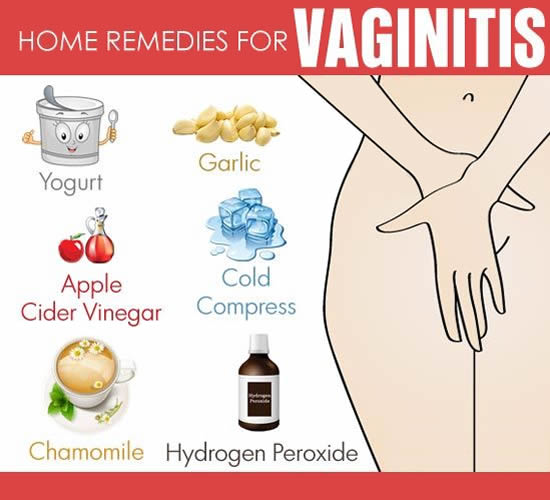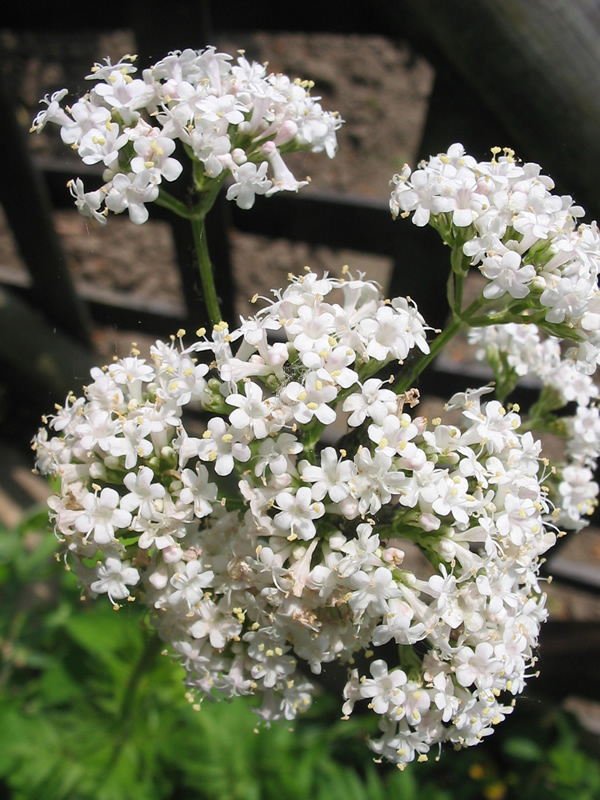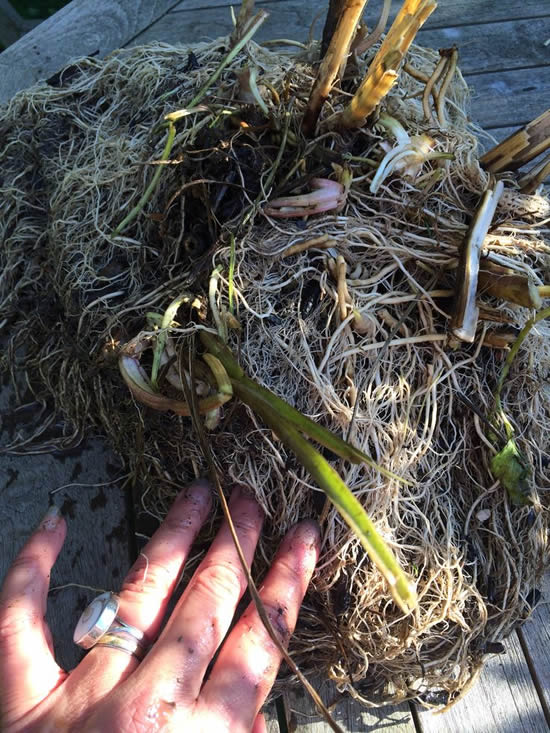 |
| Vaginitis |
Vaginitis is a condition characterized by inflammation of the vagina and vulva, most often caused by a bacterial, fungal, or parasitic infection.
Description Vaginitis, vulvitis, and vulvovaginitis are general terms that refer to the inflammation of the vagina and/or vulva (the external genital organs of a woman).
These conditions can be caused by bacterial, fungal, or parasitic infections; or by any type of allergic or irritation reaction to such things as
spermicidal
products,
condoms
, soaps, and
bubble bath
. A type of vaginitis that is caused by a low estrogen level is called atrophic vaginitis.
In general, vaginitis causes one or more of these symptoms: vaginal discharge; irritation; a burning sensation; and itching. One of the most common reasons women visit their doctor is because of a change in their vaginal discharge.
It is completely normal for a woman to have a vaginal discharge, with the amount and consistency varying during the course of the
trichomoniasis. Each will be discussed separately.
Bacterial vaginosis Bacterial vaginosis is the most common cause of vaginitis during the childbearing years. Forty percent to 50% of vaginitis cases are caused by bacterial vaginosis. The occurrence of bacterial vaginosis is difficult to determine, but studies have proposed that 10–41% of women have had it at least once.
The occurrence of bacterial vaginosis in the United States is highest among African American women and women who have had
multiple sexual partners, and is lowest among
Asian women
and women with no history of sexual contact with men.
Bacterial vaginosis is not considered a sexually transmitted disease although it can be acquired through sexual intercourse. Recent findings indicate that bacterial vaginosis can be transmitted among women who have sex only with women, if vaginal secretions are exchanged.
Bacterial vaginosis is not caused by a particular organism but by a change in the balance of normal vaginal bacteria or by a change in the pH balance. Ninety percent of the bacteria found in a healthy vagina belong to the genus Lactobacillus. For various
reasons, there is a shift in the bacterial population that results in overgrowth of other bacteria.
Patients suffering from bacterial vaginosis have very high numbers of such bacteria as Gardnerella vaginalis, Mycoplasma hominis, Bacteroides species, and Mobiluncus species; and these bacteria can be found at numbers 100–1,000 times greater than are found in the healthy vagina. In contrast, Lactobacillus bacteria are very low in number or completely absent from the vagina of women with bacterial vaginosis.
Candida vulvovaginitis Candida vulvovaginitis also has been called vulvovaginal candidiasis, candidal vaginitis, monilial infection, or vaginal yeast infection. Twenty to 25% of the vaginitis cases are candida vulvovaginitis. It has been estimated that about 75% of all women get a vaginal
yeast infection at least once. In 80–90% of the cases, candida vulvovaginitis is caused by an overgrowth of the yeast Candida albicans.
The remaining cases are caused by other species of Candida. It is not known what causes the yeast overgrowth. However, it is known that antibiotics can inadvertently kill normal bacteria in the vagina and cause an overgrowth of Candida.
Candida vulvovaginitis is not considered a sexually transmitted disease because Candida species are commonly found in the healthy vagina. It is rare to find this disease in girls before puberty and in celibate women.
Vaginal yeast infections tend to occur more frequently in women who are pregnant; diabetic and not controlling their disease; taking
birth control pills
, steroid drugs, or antibiotics; and those with the
human immunodeficiency virus (HIV). The occurrence of four or more attacks per year is called recurrent vaginal candidiasis.
Trichomoniasis Trichomoniasis, which is sometimes called “trich,” accounts for 15–20% of the cases of vaginitis. It is estimated that two million to three million American women get trichomoniasis each year. Unlike the previous two types of vaginitis, trichomoniasis is primarily a
sexually transmitted disease
in that the disease is passed from person-to-person primarily by sexual contact.
Trichomoniasis occurs in both men and women and is caused by an infection with the single-celled parasite Trichomonas vaginalis. Infection with Trichomonas vaginalis is frequently associated with other sexually transmitted diseases and helps spread the AIDS virus.
Causes and symptoms Vaginitis is most often caused by a bacterial, fungal, or parasitic infection as described above. Other microorganisms may cause vaginitis, or it may be caused by allergic reaction, irritation, injury, low estrogen levels, and certain diseases. Common causes of bacterial vaginosis include:
- Repeated sexual intercourse over a short period of time, which raises vaginal pH and results in growth of bacteria and infection-like symptoms.
- Chronic vulvar dampness, aggravated by stress or restrictive, nonabsorbent synthetic clothing.
- Chemical irritants.
- Antibiotics, which disrupt the natural vaginal (and bowel) bacterial environment.
Additional risk factors for bacterial vaginosis include
stress; a poor diet; use of an
intrauterine device (IUD); being a member of a non-white race; a history of at least one prior pregnancy; first sexual activity at an early age; having multiple sex partners, and a history of sexually transmitted diseases.
Persons at an increased risk for candida vulvovaginitis include those who have had previous candida infections, have AIDS, or are diabetic; women who use douches, perfumed feminine hygiene sprays, vaginal sponges, or an IUD; those taking birth control pills, antibiotics, or corticosteroids; and those who wear tight clothing, are pregnant, or engage in frequent sexual intercourse.
The typical symptoms of vaginitis are vaginal discharge, itching, burning sensation, and irritation. Some women have few or no symptoms, while others may have pronounced symptoms.
The main symptom of bacterial vaginosis is a fishy-smelling, thin, milky-white or gray vaginal discharge. Itching and burning may also be present. The fishy smell is stronger after sexual intercourse. The symptoms of candida vulvovaginitis are itching, soreness, painful sexual intercourse, and a thick, white, curdy (like cottage cheese) vaginal discharge.
Trichomoniasis symptoms in women range from none at all to painful urination; painful sexual intercourse; and a yellow-green to gray, foul-smelling, sometimes frothy, vaginal discharge. In men, trichomoniasis may present no symptoms, or it may be associated with urethral discharge or persistent urethritis (inflammation of the urethra).
Diagnosis Vaginitis can be diagnosed and treated by a nurse practitioner or physician. Most insurance companies cover the costs of diagnosis and treatment. To diagnose vaginitis, the doctor will examine the vagina (using a speculum to keep the vagina open) and take a sample of the vaginal discharge for tests and microscopic analysis.
Laboratory culture results should be available in two to three days, but the microscopic examination of the vaginal discharge may be performed immediately in the doctor’s office. Diagnosis may be difficult because there are many different causes of vaginitis.
Women who think that they have vaginitis should always visit their doctor to get an accurate diagnosis. Many women assume that they have a yeast infection and take over-the-counter medicines without first consulting their doctors.
To make a diagnosis of bacterial vaginosis, the doctor will check for four signs, called Amsel’s criteria. These signs are: a thin, milky-white discharge that clings to the walls of the vagina; presence of a fishy odor; a vaginal pH of greater than 4.5; and the presence of “clue cells” in the vagina.
Clue cells are vaginal cells that are covered with small bacteria. A diagnosis of candida vulvovaginitis is made after finding a normal vaginal pH (4–4.5) as well as the presence of many yeast cells in the sample of vaginal discharge or growth of yeast on laboratory media.
A trichomoniasis diagnosis is made when the parasites are found in the vaginal discharge either by microscopic examination or in laboratory cultures. The newest system for
testing for trichomoniasis is the InPouch test, which is more accurate than the older wet-mount method and easier to perform.
Treatment Herbal remedies for vaginal infections are being aggressively investigated as of 2002 in hopes of lowering the rates of sexually transmitted diseases in developing countries that cannot afford Western allopathic treatments. Chinese, Ayurvedic, naturopathic, and homeopathic treatments for vaginitis are all being studied.
One of the primary focuses of alternative treatment for vaginal conditions including vaginitis is rebalancing the normal vaginal flora. To assist with this rebalancing, Lactobacillus acidophilus and L. bifidus are recommended, either taken internally or introduced directly into the vagina. Plain yogurt with live acidophilus cultures or acidophilus powder or capsules may be eaten.
Yogurt can be inserted directly into the vagina or a
tampon can be soaked in yogurt and inserted. Garlic (Allium sativum ), taken both internally and inserted into the vagina (a peeled whole clove wrapped in gauze), may be helpful due to its antibacterial and antifungal actions.
A variety of other herbs can be used as douches or in suppository form to help treat acute flare-ups of vaginal symptoms. For example, one remedy for reducing inflammation is a douche made by adding 1–2 tsp of calendula (Calendula officinalis ) to boiling
water, steeping the mixture, and letting it cool before using.
Herbal remedies for yeast also include a variety of antifungal, antiseptic, or immune-strengthening agents such as tea tree oil (inserted via a soaked tampon, douche, or suppository),
black walnut
(Juglans nigra),
pau d’arco
(Tabebuia impestiginosa),
echinacea
(Echinacea species), and goldenseal (Hydrastis canadensis). Echinacea and goldenseal should be taken only for a limited time. As with many herbs, medical supervision may be advised for those with certain health conditions.
Persons with specific allergies may not be able to use some remedies. For example, echinacea should not be used by anyone allergic to plants in the sunflower family, and goldenseal should not be used during pregnancy or by anyone allergic to ragweed.
A boric acid douche can help to acidify the vaginal pH so that unwanted bacteria cannot survive and multiply. Because some women may be sensitive to this douche, a health professional should oversee this treatment.
Also, care must be taken to keep boric acid away from children. Vaginal pH may also be lowered by using
Summer’s Eve medicated douche
, which contains potassium iodide, or a vinegar douche (1 tbsp of vinegar perquart of warm water).
 |
| Home remedies for vaginitis |
The Gynecological Sourcebook recommends
Betadine
and
gentian violet
for treating candida vulvovaginitis. Betadine, an antiseptic iodine solution, should not be used by pregnant women. Gentian violet is an antifungal stain.
Both solutions are messy and leave stains, and some women may be allergic to either or both of them.
Oxygen Healing Therapies
reports successful treatment of candidiasis with intravenous hydrogen peroxide.
Various homeopathic treatments are available over the counter or prepared for individual cases by homeopaths. Commonly cited ingredients are pulsatilla and sepia. For atrophic vaginitis, especially in menopausal women, topical application of progesterone cream can help symptoms abate by slowing the thinning of the tissue.
Dietary modification and nutritional supplementation may also be helpful in the treatment of vaginitis. Antioxidant vitamins, including A, C, and E, as well as
B complex vitamins and
vitamin D are recommended.
Prescriptions for Nutritional Healing notes that if atrophic vaginitis is treated with prescription estrogen ointments, the body’s need for vitamin B6 is increased. Topical application of vitamin E from prepared creams or from torn
vitamin E capsules may help relieve itching.
Other home remedies for itching from
The Gynecological Sourcebook
include witch hazel or cottage cheese compresses; or baths with epsom salts or baking soda followed by blow-drying the vagina and dusting the vagina with cornstarch.
Allergy tests may be useful for women with yeast infections. Additionally, foods that yeast organisms thrive on should be avoided. These foods include cheese, alcohol, chocolate, soy sauce, sugar, vinegar, fruits, and any fermented foods or foods containing molds (e. g., blue
cheese). Wearing cotton underwear and loose-fitting clothes and avoiding pantyhose can help keep the vagina cool and dry, thus helping to prevent some forms of vaginitis.
For recurrent yeast infections, alternative treatments recommended in The Gynecological Sourcebook include boric acid douches in declining doses; oral ingestion of acidophilus with meals; and caprylic acid and myocidin, which are fatty acids derived from antifungal oils. Cases of chronic vaginitis should be addressed on systemic level by an alternative practitioner.
Allopathic treatment Both bacterial vaginosis and trichomoniasis require prescription medication for treatment. Candidal vulvo-vaginitis may be treated with either prescription or over-the-counter medicines.
It is not advisable to take over-the-counter medications for vaginal yeast infections if one does not in fact have a yeast infection. A survey of 390 gynecologists found that 44% of the women who were diagnosed with bacterial vaginosis had first treated themselves with over-the-counter yeast infection medications.
Bacterial vaginosis should be treated daily for one week with the antibiotics metronidazole (Flagyl, Protostat) or clindamycin (Cleocin), either as pills taken orally or in a gel or cream form inserted into the vagina.
Trichomoniasis is treated with either a large single dose of metronidazole or with a smaller dose taken twice daily for one week. Male sexual partners of women with trichomoniasis also must be treated, and intercourse should be avoided until both partners are cured.
Possible side effects of the oral antibiotics include nausea and adverse reactions to drinking alcohol during the treatment period. Following treatment, natural flora need to be built up again through introduction of acidophilus and other lactobacilli.
Candida vulvovaginitis is most often treated by the application of medicated gels, creams, or suppositories applied directly to the vagina. The antifungal drugs used to treat candida vulvovaginitis include oral fluconazole (Diflucan); butoconazole (Femstat); clotrimazole (Gynelotrimin, Mycelex); miconazole (Monistat); ticonazole (Vagistat), and nystatin (Mycostatin, Nilstat, Nystex).
Most require only one or a few days of therapy to be effective. Women who have recurrent candidal infections may receive treatment for several weeks followed by some form of a long-term preventative treatment. Ketoconazole (Nizoral) may be used to treat recurrent vaginitis.
Normal allopathic treatment of atrophic vaginitis includes either estrogen creams or low-dosage estrogen tablets. Tibolone, a synthetic steroid, is also given for the treatment of atrophic vaginitis. It appears to prevent bone loss as well as improving the condition of the vaginal lining.
Expected results Vaginitis is a disease with minor symptoms, and most women respond well to medications. It is believed, however, that certain vaginal infections left untreated can lead to more serious conditions, such as pelvic inflammatory disease; endometritis; postsurgical infections; and spread of the AIDS virus.
Bacterial vaginosis has been identified as a risk factor in certain complications of pregnancy, including early pregnancy loss, preterm labor, and low birth weight infants. In addition, recurrent trichomonal infection appears to be associated with an increased risk of cervical cancer.
Prevention Women may avoid vaginal infections by following these suggestions:
- Do not take over-the-counter yeast infection treatments unless the woman has been diagnosed with candidiasis before and recognizes the symptoms.
- Avoid douching because it may disturb the balance of organisms in the vagina and may spread them higher into the reproductive system.
- Do not use vaginal deodorants or sprays because they can also disturb the vagina’s natural balance.
- Thoroughly dry oneself after bathing and remove a wet bathing suit promptly.
- Avoid wearing tight clothing and wear cotton underwear
 . Change underwear often and avoid pantyhose made from synthetic fibers.
. Change underwear often and avoid pantyhose made from synthetic fibers. - Clean diaphragms
 , cervical caps
, cervical caps , and spermicide applicators
, and spermicide applicators after every use. Use condoms to avoid sexually transmitted diseases.
after every use. Use condoms to avoid sexually transmitted diseases. - After a bowel movement, wipe the area around the anus from front to back to avoid spreading intestinal bacteria into the vagina.



















